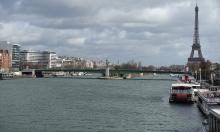People on board of Cypriot plane were frozen to death before crash
Most of the bodies recovered from a Cypriot plane that crashed near Athens with 121 people on board were frozen solid, a Greek official said, suggesting the airliner was a flying tomb before it plunged to earth.
As accident investigators combed the crash site for clues, aviation experts were baffled at what appeared to have been a catastrophic failure of cabin pressure or oxygen supply in freezing temperatures at 35,000 feet - nearly 10 km (6 miles) up, higher than Mount Everest.
One expert said reports of extreme cold suggested there was no air circulating in the cabin.
"Autopsy on passengers so far shows the bodies were frozen solid, including some whose skin was charred by flames from the crash," the Defence Ministry source, with access to the investigation, told Reuters on Monday.
Early indications suggest the 115 passengers and six crew were dead or unconscious when the Helios Airways Boeing 737 crashed 40 km (25 miles) north of Athens on Sunday. There were no survivors.
Rescue workers recovered the pilot's body, a German identified as Martin Hans Gurgen, and said they had found the plane's black box flight recorders, including the one that records pilot conversations, and are being sent to France for analysis.
The recovery of the black boxes is crucial to determining the cause of the worst air disaster in Greece and the worst involving a Cypriot airline, reports Reuters.
According to Guardian Unlimited, a government spokesman, Theodoros Roussopoulos, said the jet pilots reported that they could not see the captain in the cockpit; the co-pilot was slumped over his seat and oxygen masks dangled inside the cabin.
The jet pilots also saw two people possibly trying to take control of the plane but it was unclear if they were crew or passengers, said Mr Roussopoulos. A spokesman for Helios said the plane appeared to be on automatic pilot when it crashed.
A system failure should have left the cabin crew with a back-up system, but the Greek media speculated that toxic gas from possible faulty air conditioning could have incapacitated the two pilots.
"The crew could have been overcome very, very quickly if all the systems failed. It may have taken less than 20 seconds," said David Kaminski-Morrow, deputy news editor of internet news service Air Transport Intelligence.
Photo report
Subscribe to Pravda.Ru Telegram channel, Facebook, RSS!




